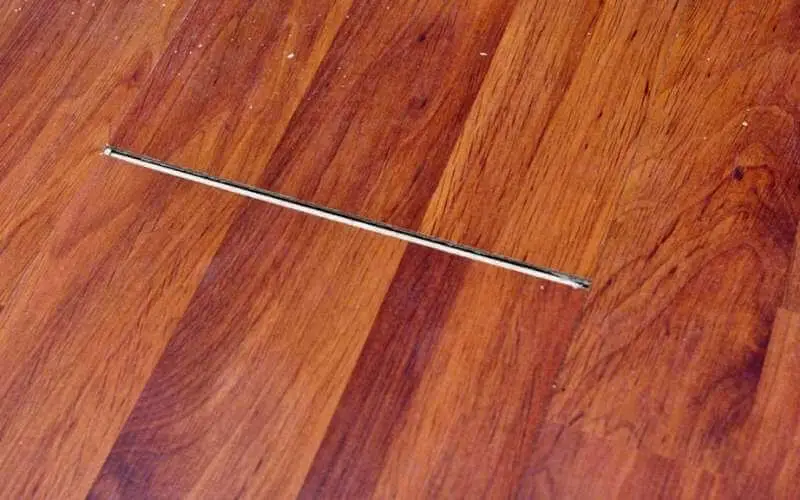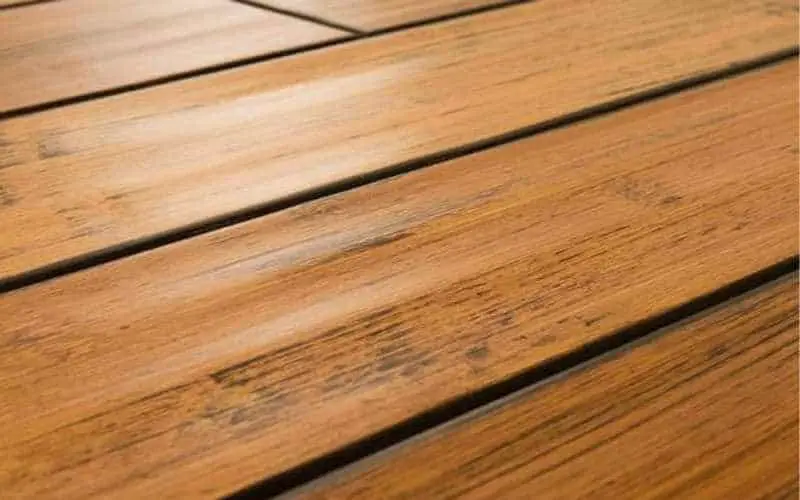Vinyl plank flooring is a popular flooring type on the market, and it’s no surprise as they come with a ton of benefits; high moisture resistance, extra wear layer that protects the flooring against scratches and chips; they are affordable and available in an array of beautiful designs.
However, one disadvantage of vinyl flooring you may want to consider before opting for the flooring type is vinyl plank flooring separation.
It is caused by several factors, and you would want to know how to fix vinyl plank flooring separating if you notice extensive gapping or cupped areas around your flooring.
You can use suction cups, wood putty, and caulk for this, and the detailed procedure on how to do so is discussed below.
How to Fix Vinyl Plank Flooring Separating
Table of Contents
1. Using Suction Cups
A suction cup and a rubber mallet can be used to restore separated vinyl plank flooring to its original position.
First clean around the area you are about to fix with a vacuum cleaner and ensure you clean the gap thoroughly.
Next, apply caulk to the gap and attach a suction cup to the plank. Use a rubber mallet to tap the suction cup to close the gaps. With the gap closed, use a wet rag to remove the excess caulk, or you can use a damp finger.
2. Using a Scrap Piece and Double-Sided Tape
If the suction cup didn’t achieve a desirable result or it cannot be used on the texture of your vinyl flooring. You can attach a scrap piece of wood to the chipped area using double-sided tape to a scrap piece of wood.
Expose one side of the tape and place it on the vinyl plank that requires fixing, then attach the scrap wood. After attaching the wood securely to the plank, use a rubber mallet to hit it gently in the direction that closes the gap. This is an effective way to fix vinyl plank flooring separating if you don’t have a silicone cup.
Read: Tape that won’t damage floors
3. Using Wood Putty
For vinyl floor planks with a wooden print and texture, or if the gaps are relatively small, you can use wood putty to solid fill the separation.
Choose a wood putty that matches the color palette of your vinyl planks and thoroughly clean the gaps beforehand.
However, this method is most effective for planks that have a uniform color. If one of your planks is dark and the other bright, it may be difficult to blend in the putty with the rest of the floor.
Opt for this method only after failing to fix your vinyl floor separation with the above two methods, and you are dealing with a small gap.
When choosing a matching wood putty color for your planks, it is recommended to observe the putty color both when wet as well as dry, as some putty changes color and tone once dried.
Related: How to fix chipped wood floors
4. Caulking
This method is similar to using wooden putty; you are simply using caulk to solid fill the gaps. You can make use of latex, acrylic, or silicone caulk and blend in the surrounding area near the gap using masking tape. Ensure to clean and vacuum the gap thoroughly beforehand.
Apply the caulk to the gaps carefully and allow it to dry before removing the masking tapes and scrape off excess caulk with damp fingers.
You can stain the caulk to match the color of your vinyl color palette and blend in your caulk accordingly.
What Causes Vinyl Plank Flooring to Separate?
1. Expansion and Contraction Due to Weather Fluctuations
Vinyl planks like hardwood flooring undergo weather-induced structural changes from time to time. Extremely hot weather causes vinyl plank flooring to separate as they expand due to excessive warmth, but the planks shrink back to their original sizes once the weather cools down.
Once the plank reduces to their original sizes, it leaves the extra volume which they had occupied during expansion unfulfilled; this leads to the formation of inter-planks gaps.
Even minor changes in your indoor temperature can cause such expansion and contraction, which causes your vinyl plank flooring to separate over the long run.
Continuous exposure of your flooring to extreme heat or sunlight and cold causes structural changes. That often affects the locks between the planks and weakens the adhesive in glue-down floors. This makes the planks more vulnerable to movements, giving rise to bigger gaps.
Read: How to fix swollen wood floors
2. High-Traffic and Moving Heavy Furniture Around
Areas of your home with high traffic may develop gaps, especially if there’s a lot of movement in that area, like your kids running around the area or someone religiously performing strenuous exercises; the planks may move around due to the pressure.
Moving heavy objects around creates a horizontal tension on the floor surface that causes vinyl plank flooring to separate.
3. Moisture Damage
If your subfloor is experiencing any moisture issue, it can also cause your vinyl plank flooring to separate, especially if the planks are glued down.
Moisture weakens the bond between adhesives and the planks, which causes the planks in high-traffic areas to become vulnerable to movement. Moving furniture around on top of such weakened flooring is most likely to result in gap formation.
Read: Quick fix to hardwood floor separating
Conclusion
The steps on how to fix vinyl plank flooring separating depend on the culprit of the separation in the first instance. You can use suction cups, wood putty, or caulk to fix and restore your floor to its original state.
Knowing what causes vinyl plank flooring to separate will enable you to avoid such incidents and keep the vinyl planks from gapping.
Maintaining a constant temperature condition in your home and keeping moisture at bay are great ways to prevent your vinyl floor plank from separating.

